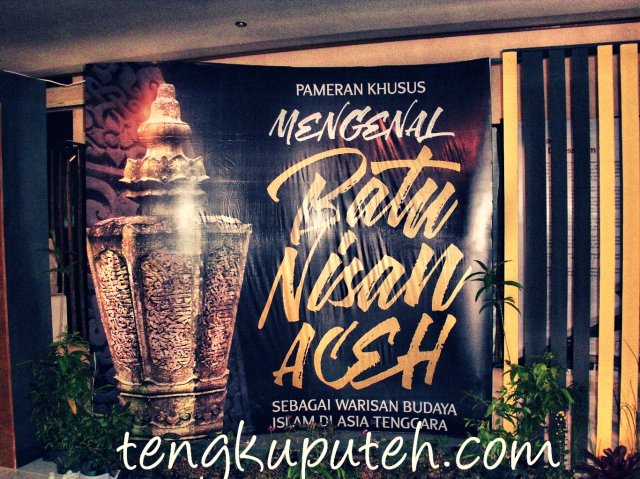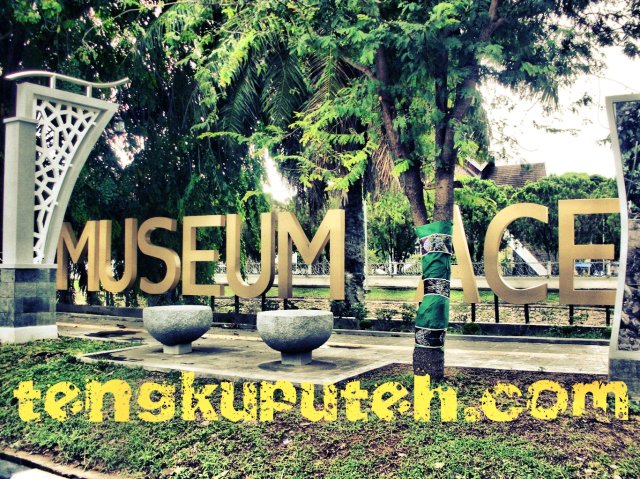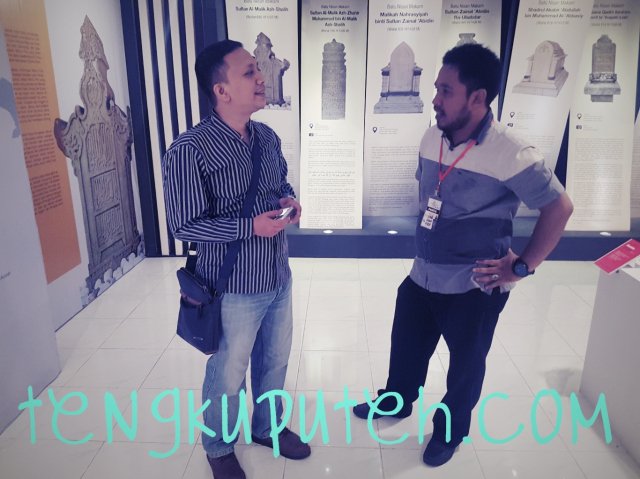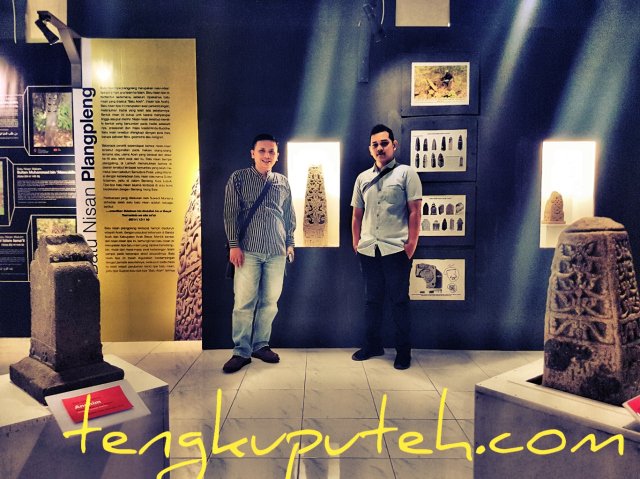
Not because the signs of death come closer, not a sign of seeking to bless. We, Saturday, May 13, 2017, visited some ancient headstone. It’s all because of love in history, love of science.
On 9-16 May 2017 Aceh Government through Culture and Tourism Office in cooperation with Mapensa, (Aceh History Concern Society) held an exhibition titled “Aceh Tombstone as the Heritage of Islamic Culture in Southeast Asia” at Museum Aceh. The tombstone exhibit features an original collection of 18 headstones, four from the Samudera Pasai Sultanate, three from the Lamuri Sultanate and 11 collections of gravestones from the time of the Sultanate of Aceh Darussalam.
Greeted by Muhajir Asyie, a member of Mapensa who became the guide that day, we went around. According to him, this exhibition just entered the introduction stage of Aceh gravestone, still in the simple process has not covered all types and models of the headstone. For the introduction stage this exhibition itself can be said to be successful, but in the future expected more can be displayed and has its own tombstone museum.

The exhibition itself in a few days took place more visited by elementary, junior and senior high school students around Banda Aceh and Aceh Besar and surrounding areas. According to Muhajir Asyie is in accordance with the desired target because this exhibition wants to teach history, especially the younger generation.

The exhibition materials are mostly from Mapensa. Muhajir Asyie added that this Aceh tombstone exhibition is the first after several decades, in the hope that with this exhibition, the general public will keep the Aceh tombstones as cultural assets, should not be used as a knife sharpener or used as an ox binder.
As we toured the exhibition area, from the three sultanates whose gravestones were exhibited, the distinction between the tombstones of the Lamuri Sultanate (andesite) was very hard and rough. While the tombstones from the Sultanate of Samudera Pasai and the Sultanate of Aceh Darussalam are made of fine stone coming from the mountains. In this case, according to Muhajir say that tombstone of the Sultanate of Samudera Pasai and Sultanate of Aceh Darussalam this some found to serve as a tool knife sharpener. This is a pity because Aceh’s gravestones are a legacy to be saved. Therefore, the tombstone is a historical evidence that Aceh has a high culture in the past.
How should the younger generation understand Aceh’s history? According to Muhajir Asyie, the young generation should understand that the gravestone is “Islamic Art” is a culture arising from the Islamization process of the archipelago, is a long process started from the Sultanate of Samudera Pasai along with the Sultanate of Lamuri and continued by the Sultanate of Aceh Darussalam. The history must be inherited so that the younger generation does not regard the gravestone as a heresy tool, “god stone”, as well as other mystical thoughts. Why? Because the wrong thinking will produce the wrong conclusion as well.

We agree in this matter, history, if not told correctly, will only be a myth and legend alone. There are many historical stories that just become saga that never seems to happen, let’s together straighten it. What for? We are not getting wealth or treasure by studying history. In our opinion it is simple, to enrich the mind and strengthen our memories.
Check out the visit of Tengkuputeh team to Aceh museum in the following video:
Source : https://tengkuputeh.com/2017/05/16/visiting-the-exhibition-aceh-tombstone-as-an-islamic-cultural-heritage-in-southeast-asia/
Visit us at : https://tengkuputeh.com/
Correction.
Not Mapensa, but Mapesa. And @mapesa our official account on Steemit. Thank you for your attention.
thank a lot